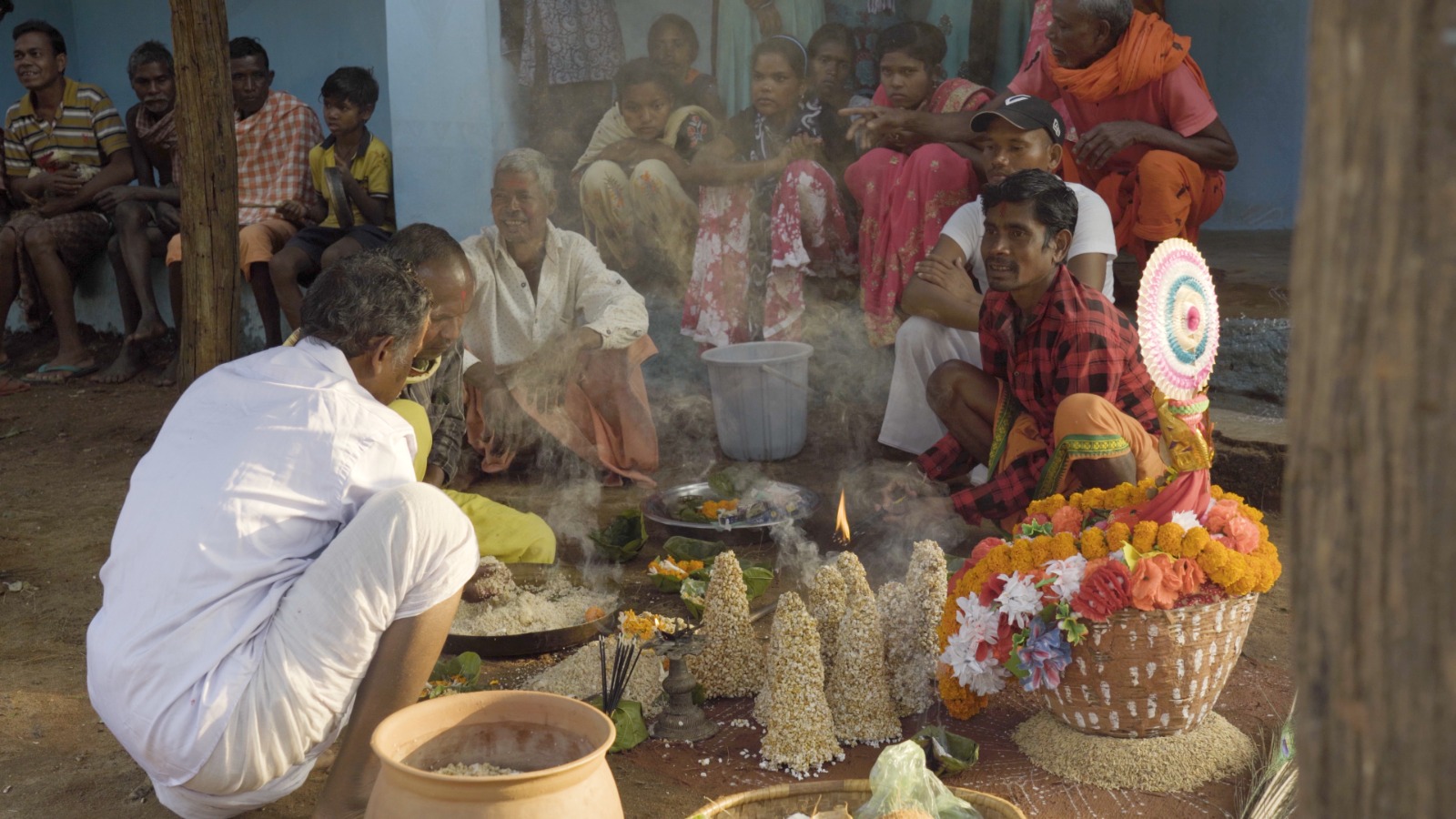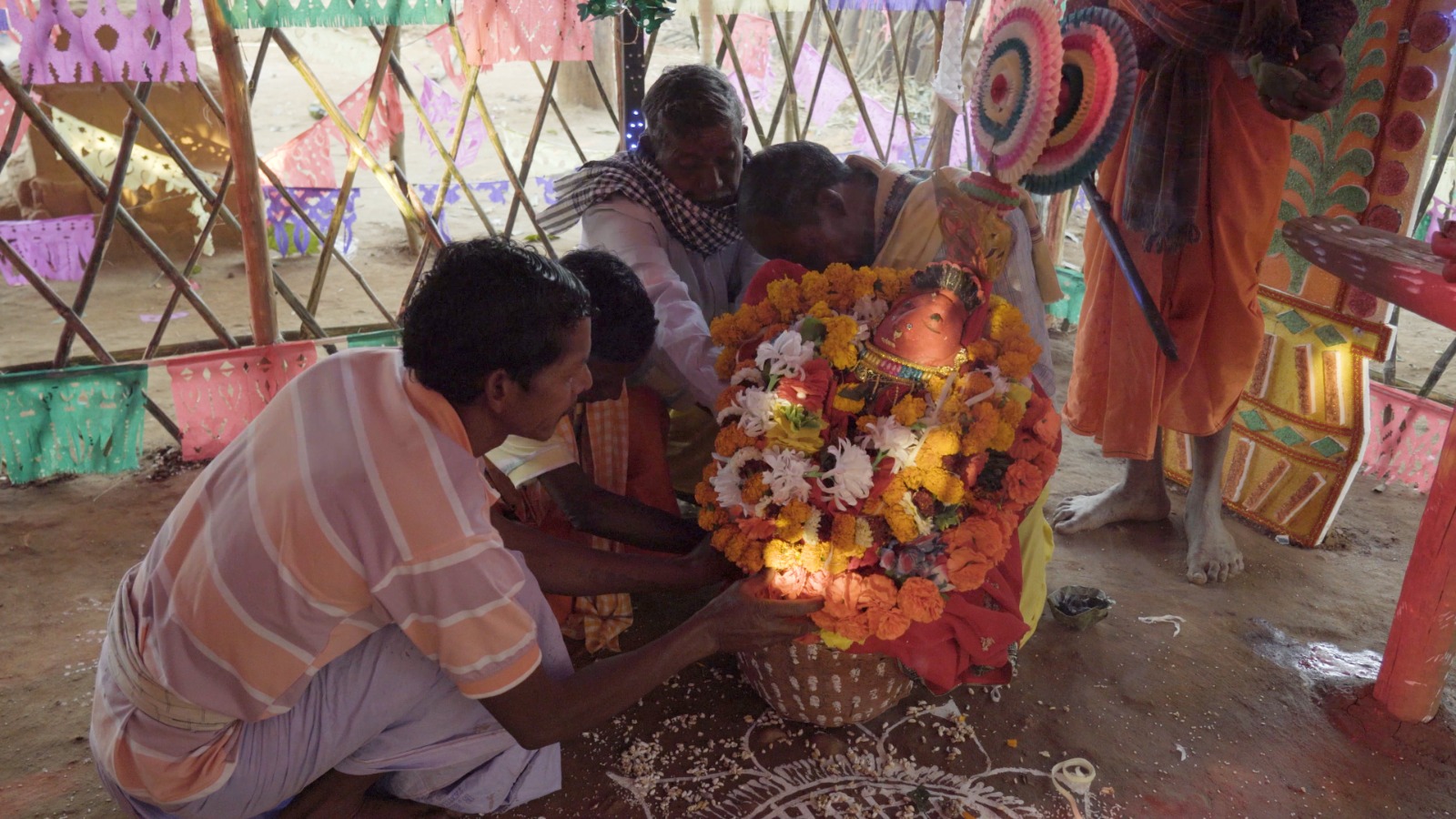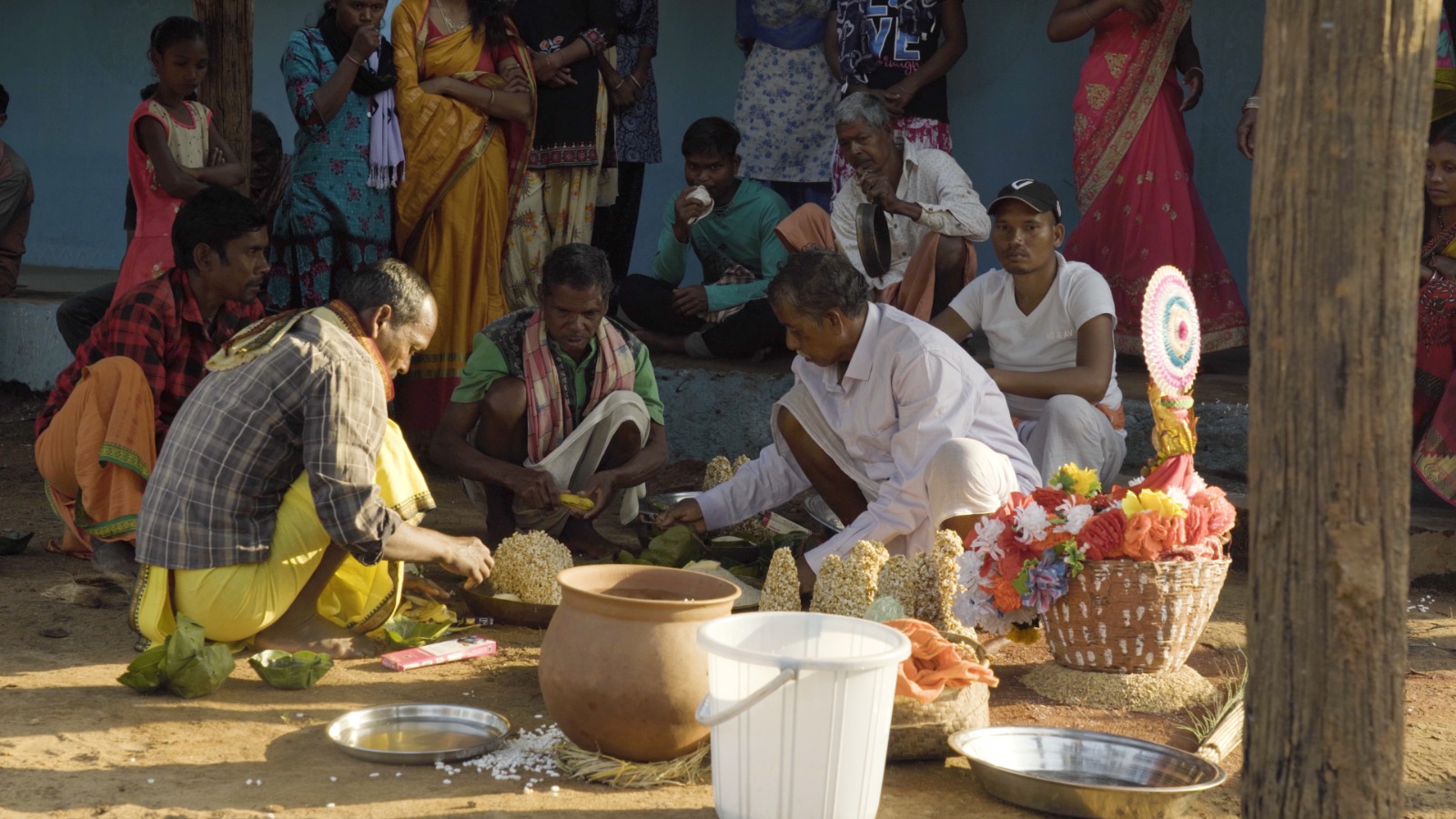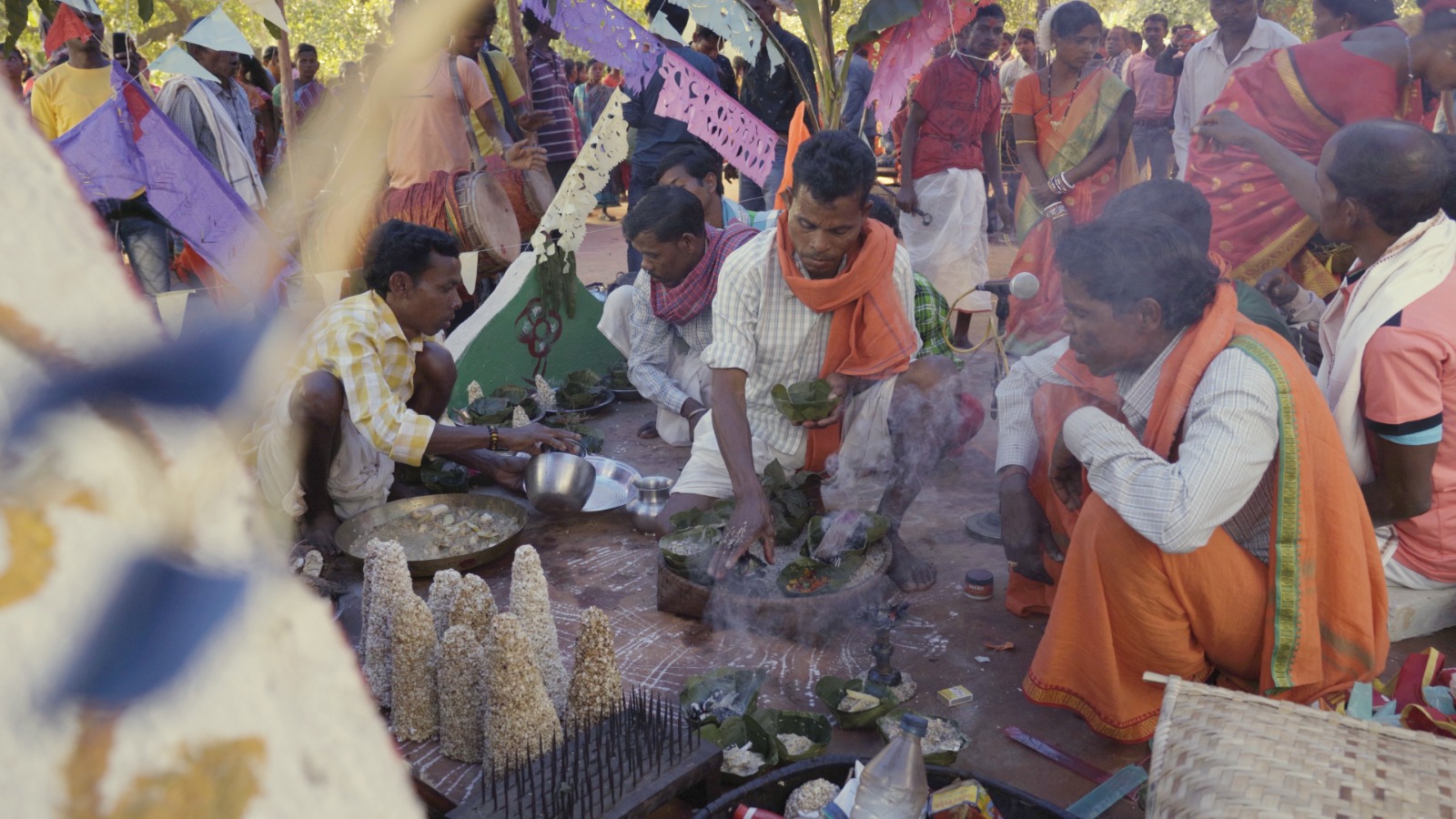State
Tribe Name
Art Type
short description
The Bishri Ossa festival is a week-long annual celebration of the Paudi Bhuyan tribe, primarily residing in the hilly regions of northern Odisha. Dedicated to Bishri Thakurani, a protector and village deity believed to ensure the community's welfare, the festival is observed between November and February. Preparations begin with women decorating homes with rice flour motifs and crafting leaf utensils and garlands. Men construct a Durbar, a temporary shed, near the village shrine (kothi ghar), which is cleaned by the kothi naikani.
Thumbnail

Filter Postion
Left
Filter Background
Off
Theme
Filter Header Image

content
Image

description
The Bishri Ossa festival is a week-long annual celebration of the Paudi Bhuyan tribe, primarily residing in the hilly regions of northern Odisha. Dedicated to Bishri Thakurani, a protector and village deity believed to ensure the community's welfare, the festival is observed between November and February. Preparations begin with women decorating homes with rice flour motifs and crafting leaf utensils and garlands. Men construct a Durbar, a temporary shed, near the village shrine (kothi ghar), which is cleaned by the kothi naikani.
Image Mode
landscape
Image

description
The festival commences on a Thursday with a procession to the potter's village to create the idol of Bishri Thakurani from clay and milk, symbolizing a divine instruction from the past. The adorned idol, treated like a bride, is returned to the village with ritualistic offerings and the sacrifice of a hen. Bishri Thakurani is welcomed at a clearing and then installed on a paddy mound in the Durbar, where the priest (Dehuri) offers rice and mua (puffed rice and jaggery sweet), accompanied by incense and gongs, with more hen sacrifices. A ritual also honors Singh Duari, the shrine's protector.
Image Mode
landscape
Image

description
For the next six days, daily prayers are led by a sangeetkar, with the priest performing aarti. Many villagers observe fasting. On the penultimate day, the idol is moved to a specially constructed kunja ghar, signifying an engagement ceremony. Wedding rituals for the deity are performed here by the priest amidst drumming and merriment. During these rituals, the deity may possess individuals, selecting future festival servants. The night is filled with songs and stories about the deity sung by Gauni women, accompanied by Dom musicians, and communal dancing until dawn.
Image Mode
landscape
Image

description
The final day, a Friday, sees women preparing mua offerings. The priest prepares pana (mua, fruits, and milk) for distribution as prasad. A fair-like atmosphere prevails with stalls. Women bring final offerings to the kunja ghar, where the deity is believed to possess villagers representing Singh Duari, who perform penances. The goddess is then taken in procession through the village, stopping at each household for prayers and offerings. Finally, the idol is immersed in the river at dusk, concluding the Bishri Ossa festival, with the Paudi Bhuyan hoping for continued prosperity through the deity's benevolence.
Image Mode
landscape
promoted
On
Verified
On
